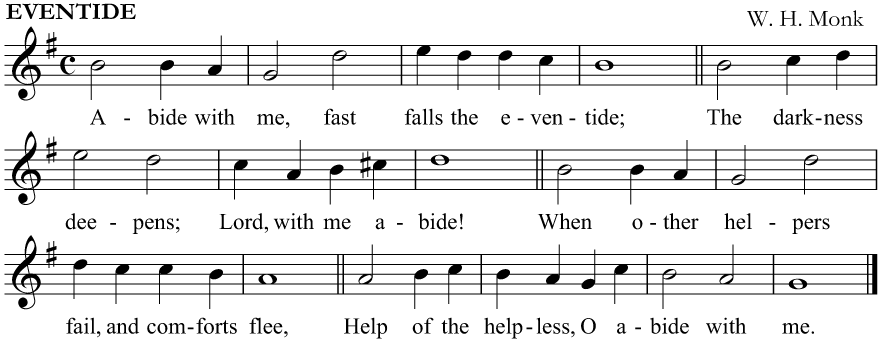Bars
In this guide...
Key terms:
Subscription required!
To view the complete study guide, you will need a valid subscription. Why not subscribe now?
Already have a subscription? Make sure you login first!
Introduction
We have already looked at the way we write down different durations of notes and rests, and now we'll look at how these different durations are grouped together.
A reminder
In the previous section, we looked at the way to write down different durations of notes and rests. We saw the symbols used for the different notes, and their proportional durations, with a semibreve being equal in duration to four crotchets, for instance.
| A semibreve is equal to four crotchets | |
|---|---|
 |  |
Now we'll look at how these different durations are grouped together into longer regular units.
Bars
To make reading and counting music easier, we divide music with vertical lines called barlines, and the space between two bar lines is called a bar.
In the example below, there are four bars (but with no music in them!)
 Four empty bars
Four empty barsBars and beats
We count each beat of the bar upwards from 1. When we get to the end of a bar, we start at 1 again at the beginning of the new bar. Counting the example below in crotchet beats, we would read "1, 2, 3, 4; 1, 2, 3, 4" as shown by the numbers below the music.
 Counting 1, 2, 3, 4, 1, 2, 3, 4
Counting 1, 2, 3, 4, 1, 2, 3, 4A bar can contain any variety of note or rest durations but the underlying beat carries on regardless. Here is the same example again, with quavers instead of crotchets. The beat is the same!
 The beat is the same: 1, 2, 3, 4...
The beat is the same: 1, 2, 3, 4...Common time
The "C" symbol at the start of these examples is short for common time, and indicates that there are four crotchet beats to a bar.
This symbol is called a time signature. We will encounter many different types of time signature, and their role is explained fully in Time Signatures.
Cut common time
A related symbol, like C but with a vertical line through the middle, is short for cut common time. This indicates that there are only two beats in the bar.
However, there will still be four crotchets to a bar in cut common time: the difference is that we count the bar in two, rather than four. The reason is usually that music in cut common time is relatively quick, and feels more natural "in two", and not "in four".
 Counting in cut common time: 1, 2, 1, 2...
Counting in cut common time: 1, 2, 1, 2...Special barlines
There are two special types of barlines to look out for.
Double barlines
Between sections of music within a single piece of music, you will sometimes see double barlines: two barlines running parallel and close to each other at the end of a bar.
These double barlines carry no particular meaning except to point out that you are beginning a new section of music – for example, in a new tempo, or a chorus following a verse.
Final barlines
At the end of a complete piece of music, you will see a special final barline. Again this consists of two parallel lines, but here the second is much thicker. As you might expect, the "final" barline indicates that you have reached the end of the music, and that there is no more music on the next page!
The example below - the famous hymn tune "Abide with me" - has double barlines between each line of text. In this case, the double barline is useful if you are trying to follow words for another verse printed separately, so you can see at a glance where the end of each line corresponds to the music.
The example also finishes, as you might expect, with a final barline.
 Eventide by W. H. Monk
Eventide by W. H. MonkRhythm within a bar
The first note of the bar is more important than the others and is normally played a little more strongly. We will look at the reasons for this, and the relative importance of the other beats in Time Signatures.
Effect on accidentals
In the study guide Accidentals we learned how notes can be modified by using flat and sharp signs to lower or raise them by a semitone.
We also noted that these modifications remain in effect until they are cancelled in one of two ways. In the first way, a second accidental cancels the first.
Recall the example below from Mozart's The Marriage of Figaro. In bar four the first G is modified by an accidental to be a G sharp and the first A is made into an A sharp. These accidentals remain in effect throughout the bar (i.e. until the next barline) unless they are cancelled, as they are here by natural signs before the notes A and G in the second half of the bar.
 Cancellation of accidentals in Mozart's The Marriage of Figaro
Cancellation of accidentals in Mozart's The Marriage of FigaroNotice also that it was necessary to specify a G sharp at the start of bar 4 even though the modification had already been made in bar 3. This is because the barline is the second way of cancelling accidentals. When you get to the end of the bar, you go back to the sharps and flats of the key signature only, forgetting all of the extra accidentals from the previous bar.
Read more...
With a subscription to Clements Theory you'll be able to read this and dozens of other study guides, along with thousands of practice questions and more! Why not subscribe now?
Revision
Are you sure you've understood everything in this study guide? Why not try the following practice questions, just to be sure!